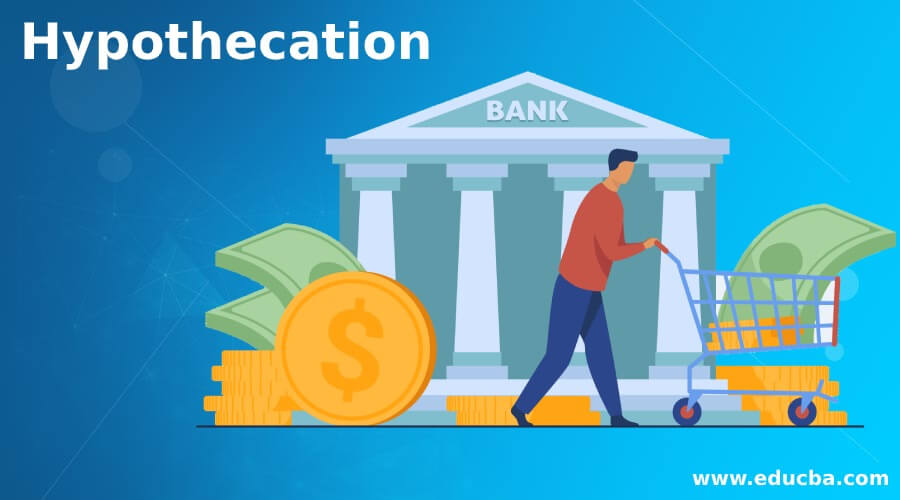What is Hypothecation?
In financing the purchase of movable assets, such as vehicles, hypothecation refers to borrowers offering a lender a movable asset as collateral for a loan. This enables borrowers to secure the loan by pledging their movable assets. If the borrower fails to fulfill their repayment obligations, the lender has the legal right to assume ownership of the hypothecated asset. In the United States, the lender has the right to assume ownership of the collateral, commonly known as a lien.
Explanation of Hypothecation
Hypothecation, a form of collateralized debt provided by the lender, involves creating a charge against movable assets as security for the loan.
In this arrangement, the lender retains the right to ownership while the borrower maintains possession of the collateralized asset. Suppose the borrower fails to repay the loan. In that case, the lender has the legal authority to exercise its ownership rights and seize the collateral to recoup the outstanding balance, comprising both the principal and interest.
Example of Hypothecation
For example, suppose David requires a loan to purchase a new car. Now, if he doesn’t have any collateral (unsecured loan), the interest rate could be very high to compensate for the risk of non-recovery in case of a default. On the other hand, if he agrees to the hypothecation arrangement and offers the new car as the collateral security, then the interest rate charged could be significantly low depending on the terms & conditions of the lender. In this scenario, if David cannot pay the bank dues within the given time, the bank will seize the new car to recover the dues.
How to Remove Hypothecation in Case of Insurance?
It is important to remove the hypothecation in the case of insurance; otherwise, the claimed insurance benefit will go to the lender instead of the owner. In fact, even if the vehicle registration is clearly in the owner’s name, the hypothecation reference still needs to be removed for insurance purposes. Now, let us look at the step-by-step process for removing hypothecation in the case of insurance.
- Collect the No Objection Certificate (NOC) from the lender or the bank stating that the car loan has been closed.
- Visit the office of the local transport authority and provide a copy of the NOC received from the bank. The applicant will be asked to visit on another specified date.
- Another copy of the NOC has to be submitted to the insurance company.
- Submit the application form for the removal of hypothecation.
- Visit the office of the local transport authority once more on the specified date and collect the ‘Acceptance Form’ from the officer who has verified the applicant’s documents. The ‘Acceptance Form’ contains all the details mentioned on the registration certificate.
- After successfully completing all necessary steps, the applicant will gain rightful ownership of the vehicle, and the lender’s ownership will be canceled.
Hypothecation Agreement
The lender and the borrower execute the hypothecation deed to formalize their agreement regarding hypothecation. Typically, a hypothecation agreement includes definitions, insurance details, rights & remedies for each party, inspection rules, details of the security that has been marked for hypothecation, each party’s liability, sale realizations, relevant jurisdiction, etc. In effect, this agreement intends to protect the rights of both – lender and borrower.
Hypothecation Charges
If the buyers purchase a car with their own available funds, they need not pay any hypothecation charges. However, they pay these charges when they opt for a loan to purchase the car. The variation of hypothecation charges depends on the asset type being purchased. Knowing your car loan eligibility can help you anticipate any applicable hypothecation charges if you are considering financing your purchase.
Advantages
- In the case of hypothecation, the borrower retains ownership and possession of the asset, which means that the borrower has access to the asset at all times.
- Lenders generally are more willing to fund loans backed by collateral, as they consider such loans secure. Consequently, the higher competition among lenders results in lower interest rates for borrowers.
- Using hypothecation for a small number of loans simplifies the process and facilitates easier utilization and repayment.
Disadvantages
- Even if the borrower has partly paid off the installment, the lender has the right to seize the collateral in case of any delay in payment. This can result in a significant financial loss for the borrower.
- The lender may hold the borrower legally responsible if the proceeds from the sale of the seized asset do not fully cover the remaining debt, posing a risk of potential legal consequences for the borrower.
Conclusion
Borrowers can utilize the hypothecation method to obtain funds for acquiring movable assets while retaining the ability to use the assets throughout the loan period. These collateral-backed loans offer lower interest rates than unsecured loans, making them appealing to lenders due to the presence of collateral. Nonetheless, it is crucial for lenders to periodically verify and monitor the availability of the collateral to protect their interests.
Recommended Articles
This is a guide to Hypothecation. Here we also discuss the introduction and how to remove hypothecation in the case of insurance. Along with advantages and disadvantages. You may also have a look at the following articles to learn more –


